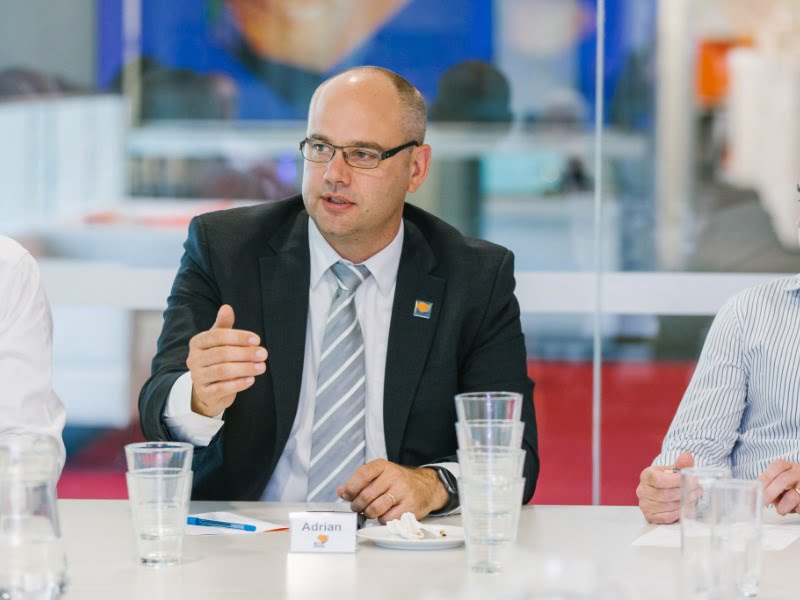It is fantastic to see the excitement building in what is shaping up to be a massive opportunity for Australia. With decades of sustained development within our local research sector, the shift to focus our national capability on the commercialisation of innovation, that will benefit many of our national priorities is proving up to be a huge potential windfall for our local economy.
While it is well understood that we will need a modern, resilient domestic technology industry to build our sovereignty capability, the research sector fast is emerging to become the feedstock for our future economic growth.
And there is no shortage of investors, looking for the “next great technology”, or trying to leverage solutions developed specifically for one industry with the scale of addressing multiple sectors, both here and abroad.
The national manufacturing priorities on their own highlight an immediate addressable market, indicating a bright potential future for our technology sector here in Australia.

Personally, I was fortunate to spend almost a decade with two of the world’s leading industrial technology companies; ABB and General Electric. Inside these global giants was a healthy respect and recognition of the depth and breadth of Australia’s home-grown innovations. Australia often presented huge potential for these industry leaders, as they could see the global market opportunity for our local capabilities.
Back home however, it looks like we could not see the same potential. We have a gap in our local technology ecosystem, or maybe the opportunity was lost within the siloes of our huge export market sectors.
Whatever the reason, while as a nation we are proud (and very well should be) of the hundreds and thousands of small innovative companies that make up our economy, we have relatively few medium-sized technology vendors, and even less when you consider those serving multiple end markets.
While there are a few notable and highly successful exceptions, as a nation we seem to be missing the ‘bench’ of mid-size Australian technology companies.
In other global economies, these are the companies that do the heavy lifting. They are the ‘industry’ partner with governments, and bring the scale to realise the full market potential; they co-invest in research and contribute to the development of products from innovation; and they have the necessary support and experience to translate research capabilities into economic return.
In Australia however, within our local market those who do manage to break through are quickly acquired by global companies, who often sell their capabilities back to our end market operators at a premium.
However, in times of crisis opportunities arise – and it is clearly a new dawn for us down under. We are at an inflection point. As we look to address our sovereign capability, and invest in building our local modern manufacturing strategy, the question ‘manufacturing what’ often becomes the focus.
If we look to the future of our primary industries, and consider the demands of a sustainable energy market, and when we maximise the production from the raw material inputs that are conveniently embedded in our critical mineral resources – then we are potentially holding all the cards for a technology boom.
The question is, do we know how to play the hand?
In my time as CEO for the Mining Equipment, Technology and Services Growth Centre (METS), I’ve been lucky enough to see even further into the capabilities of our research sector.
What lies beneath the covers is extraordinary. There is a wealth of knowledge and experience, distributed all across the country and spanning multiple industry sectors. Our researchers are amazing, constantly and consistently progressing feverishly along the TRL (Technology Readiness Level) scale, expanding and building out their work, well beyond the first point of commercial readiness.
Australia could realise a far greater economic potential if we were to change how we consume this research sector output. We need to shift our focus, from funding research that delivers individual outcomes, to creating commercial solutions that provides industry wide value.
We must support the capabilities of our technology vendor ecosystem. We should encourage our local vendors to invest in research capability, help them realise a return on their investment, and enable them to access the VC community already in the wings, waiting to translate our research outcomes to products and services.
What we have uncovered across the Growth Centres is just the tip of the iceberg. The formation of the Electric Mine Consortium for example, successfully brought together universities, end market operators, technology vendors, and solutions providers.
The group sized their own market needs, defined their future industry demand. They created an attractive market for investment, and gained the interest of local and international vendors.
By bringing local vendors and investors to the very best of Australia’s research sector, we are now delivering outcomes to meet the mining industry’s aggressive CO2 emissions targets, and benefiting from the rapid movement of the resources sector towards their net zero commitments.
This is just one of the examples found by using vendors as the key translation partners for our research sector outcomes. These collaborative projects have already created hundreds of jobs, piloted and brought to market multiple new technologies, and established new companies with the commercial maturity to address the future needs of our national priority sectors.
Australia has a bank of great ideas, and by pivoting towards commercialising our research capability, we are addressing a foundational issue unique to our local economy. We have the vendors, the investors, the innovators and the demand – all the ingredients necessary to sustain our economy into the future.
We can halt Australia’s slide down the economic complexity index, and bring back the pride and respect of our STEM sector. Australia can once again demonstrate that there is a future in technology innovation, and a career here in-country, as well as significantly increasing the value-added exports of our nation.
Then Australia would be making the most of the cards we have been dealt.
Adrian Beer has global experience in industrial technology organisations across mining and resources, energy, utilities and infrastructure. He is CEO of mining equipment, technology, and services industry growth centre METS Ignited.
Do you know more? Contact James Riley via Email.

